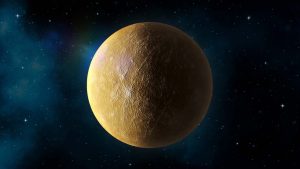
20 interesting facts about light
- 👁️ 1552
A fundamental component of the universe, light has mystified and captivated humans for millennia. It plays an integral role in various natural phenomena and countless technological applications. From photosynthesis, which sustains life on earth, to fibre optics, the backbone of modern communication systems, light is truly essential. A deep understanding of light has even led to revolutionary theories in physics, like Einstein’s theory of relativity. Let’s illuminate some of the most intriguing facets of light.
- Light travels at a speed of approximately 299,792 kilometres per second in a vacuum, making it the fastest thing in the universe.
- However, light doesn’t always travel at that speed. It slows down when it passes through different media, such as glass or water.
- Light is composed of tiny particles called photons, which exhibit properties of both particles and waves. This concept is known as wave-particle duality.
- Light comes in a variety of forms that make up the electromagnetic spectrum, including (from longest wavelength to shortest) radio waves, microwaves, infrared, visible light, ultraviolet, X-rays, and gamma rays.
- Visible light, the light detectable by the human eye, is only a tiny part of the electromagnetic spectrum.
- White light is actually made up of a combination of different colours, which can be split into its components using a prism, a phenomenon known as dispersion.
- The energy of a photon, a light particle, is directly proportional to its frequency and inversely proportional to its wavelength.
- When light hits an object, it can be reflected, refracted (bent), or absorbed. The interactions depend on the object’s material and the light’s wavelength.
- Light’s speed is what sets the “cosmic speed limit,” according to Einstein’s theory of relativity. Nothing with mass can accelerate to, or exceed, the speed of light.
- Light from the Sun takes about 8 minutes and 20 seconds to reach Earth, despite the sun being 150 million kilometres away.
- Bioluminescence is a phenomenon where light is produced by a chemical reaction within a living organism. This is seen in creatures like fireflies and deep-sea organisms.
- The study of light, known as optics, is a significant field in physics.
- The colour of an object we see is the colour of light it reflects. A red apple looks red because it absorbs all colours of light except red, which it reflects.
- Light can exert pressure on objects due to the momentum of photons. This is the basis for the concept of “solar sails” in space exploration.
- The Northern and Southern Lights (Aurora Borealis and Aurora Australis) are natural light displays caused by the interaction of solar particles with the Earth’s magnetic field.
- The bending of light as it passes around an object is known as diffraction. This principle is used in various technological devices, including spectrometers and diffraction grating.
- Our eyes are sensitive to light, which is why we squint in bright light and our pupils expand in low light.
- Photosynthesis, the process by which plants produce food, is driven by light energy.
- Infrared light, though not visible to the human eye, can be felt as heat.
- The term ‘laser’ stands for ‘Light Amplification by Stimulated Emission of Radiation.’ Lasers produce light that is highly directional and of a single colour.
From the depths of the cosmos to the screen of your smartphone, light is omnipresent and indispensable. Its unique properties make it an endlessly fascinating topic of study, with the potential to unveil more of the universe’s secrets. As we continue to explore its applications in science and technology, light remains a testament to our quest for understanding and innovation.











